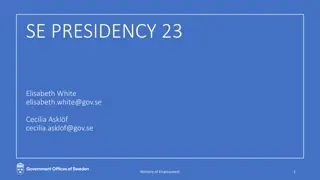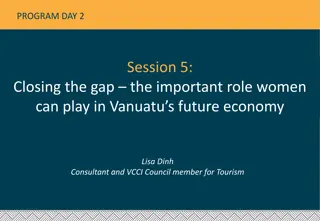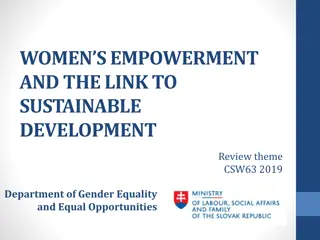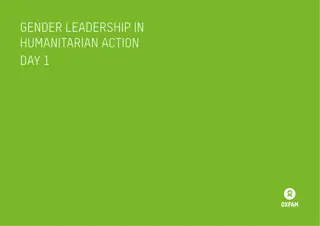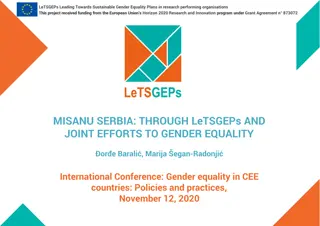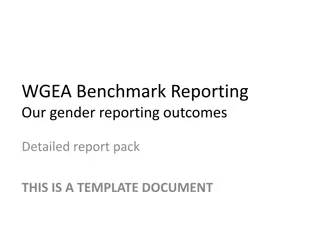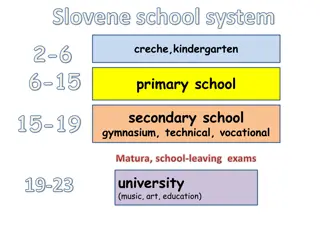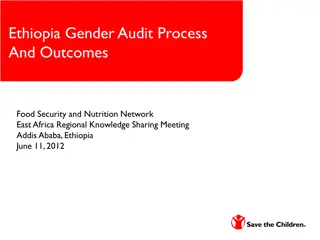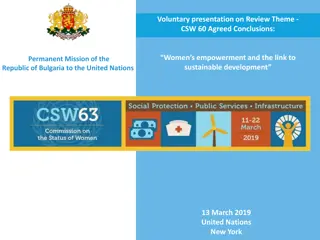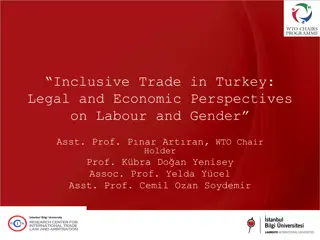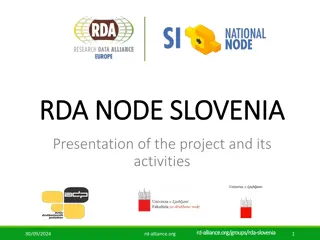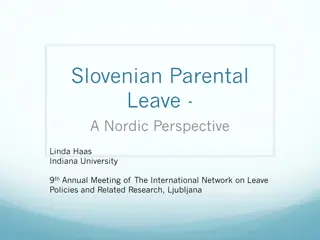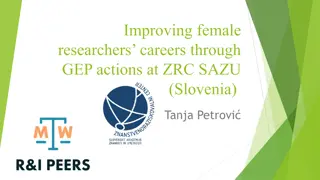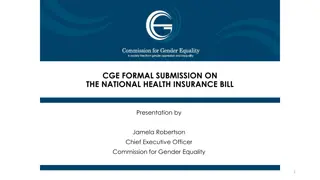Implementing Gender Equality Plans at ZRC SAZU, Slovenia
One of the largest research institutions in Slovenia, ZRC SAZU, is implementing Gender Equality Plans (GEPs) to improve gender equality in research organizations. The GEP project involves piloting organizations in Greece, Tunisia, Israel, Italy, Spain, Cyprus, and Slovenia. Research and analysis of national and institutional contexts, as well as employee perceptions, are guiding the preparation and implementation of GEPs. Adopted in February 2019, ZRC SAZU's GEP focuses on mentoring, work-life balance, promoting excellence of female academics, raising awareness of gender equality, and improving gender sensitivity in official documents.
Download Presentation

Please find below an Image/Link to download the presentation.
The content on the website is provided AS IS for your information and personal use only. It may not be sold, licensed, or shared on other websites without obtaining consent from the author.If you encounter any issues during the download, it is possible that the publisher has removed the file from their server.
You are allowed to download the files provided on this website for personal or commercial use, subject to the condition that they are used lawfully. All files are the property of their respective owners.
The content on the website is provided AS IS for your information and personal use only. It may not be sold, licensed, or shared on other websites without obtaining consent from the author.
E N D
Presentation Transcript
Implementing GEP at ZRC SAZU (Slovenia) Tanja Petrovi
One of the largest research institutions in Slovenia Comprises 18 institutes 380 employees The financing is largely ZRC SAZU project-based High autonomy of institutes in organization of work
Implementing GEPs in 7 piloting organizations (Greece, Tunisia, Israel, Italy, Spain, Cyprus, Slovenia) R&I PEERS project Pilot Experiencesfor Improving GenderEquality in Research Organisations (Horizon 2020, 2018-2022) RPOs and RFOs Diverse organizations (size, funding, structure) Aims: Implement and improve seven Gender Equality Plans in Research and Innovation-focused organisations Smooth the gender gap in decision-making and research-performing activities Maximise the impact of gender content in research programmes
Research and analysis of the national context (legislation, regulations and social policies ) Research and analysis of the institutional context at ZRC SAZU (existing protocols, measures, regulations) Research of the organizational culture (interviews, procedures analysis): existing practices, construction of excellence Research and analysis of employees perceptions of GE (experiences, opinions, suggestions) the survey The analysis of selected existing practices (promotion of excellence; use of gender sensitive language) Preparatory steps for GEP definition
Adopted in February 2019 Resulted from close cooperation of the R&I project team with ZRC SAZU administration Encompasses five target areas: Mentoring Work-life balance Promoting excellence of female academics Raising awareness of gender equality in the organization Improving gender neutrality and sensitivity in official documents ZRC SAZU s GEP
Target areas selected considering the employees needs and already available measures (e.g. Integrating gender perspective in research has been extensively covered with GARICA activities) Strategies within these five target areas designed to most immediately respond to employees needs Work-life balance: emphasis on flexible working hours and telework Promoting excellence: both a PR strategy and encouraging researchers to promote their results Gender sensitive language: focus on personalized documents GEP design
Resistance and reluctance Lack of responsibility among some administration members Hierarchical structures that pose constrains in acting of some administration members Work overload of administration staff Challenges There are bigger problems than this There are no such problems here Understanding GEP implementation as a set of measures related to an EU project
Making GE related issues visible (publishing statistics, analyses, organizing events) Horizontal connecting and cohesion among researchers Networking on the national level Support by high-level management Gains Opening space for dialogue Rising awareness about structural inequalities Rising solidarity and alliances


